A guided deep dive into one of my five favorite experiences at Venice Immersive 2025: CREATION OF THE WORLDS
CREATION OF THE WORLDS is a VR experience inspired by the visionary art and music of Lithuania’s most renowned artist, Mikalojus Konstantinas Čiurlionis. This poetic VR odyssey is both a meditation on creation and a metaphor for the human journey toward inner maturity.
Created by Kristina Buožytė and Vitalijus Žukas, the experience blends immersive storytelling with interactive elements, inviting viewers into a dreamlike world. With the freedom to navigate and soar through evolving environments, the viewer gradually discovers they are not merely an observer — but the creator and caretaker of timeless worlds.
Inspired by over sixty of Čiurlionis’s paintings, the experience blends visual art with a contemporary reimagining of Čiurlionis’s music by Phil Von and Rokas Zubovas.
I remember that at the 2024 Venice Film Festival it took me several days to find my favorite piece. It was only when I stumbled upon Play Life, created by the Lithuanian team made up of Zilvinas Naujokas, Vilius Petrauskas, Mantas Pronckus, Donatas Ulvydas, Algis Kriščiūnas, and Darius Žičkus, that I realized I had finally fallen in love with one of the projects of the selection.
To this day, Play Life remains, in my view, one of the most poetic and mesmerizing examples of 360 and immersive work. It also taught me something about Lithuania’s approach to the immersive field, an approach that, in some respects, could serve as a reference for countries still trying to find the right direction.
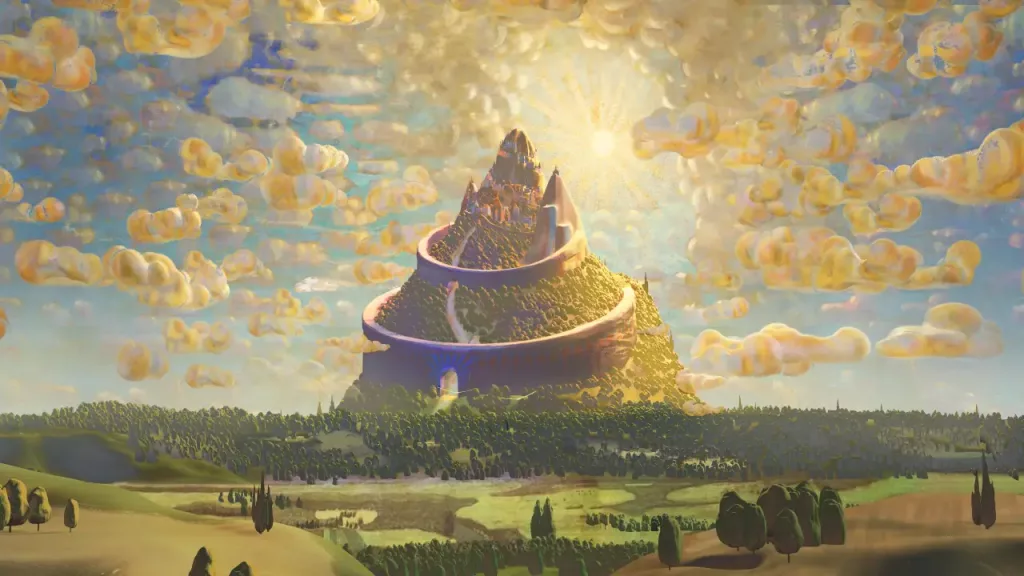
A few weeks ago, while interviewing Liz Rosenthal and Michel Reilhac for the new edition of Venice Immersive, I learned that a Lithuanian work would again be in competition in 2025, and I was immediately excited. The piece is titled PASAULIŲ SUTVĖRIMAS (CREATION OF THE WORLDS) and comes from the people that, in 2018, created the beautiful ANGELŲ TAKAIS (TRAIL OF ANGELS).
As Liz Rosenthal said: “[CREATION OF THE WORLDS] is a spectacular journey that takes you on a cyclical fairytale journey from the cosmic and the macro to the intimate and micro. It’s one of the most meditative and visually stunning experiences we’ve seen.”
I very much agree with this comment. Watching CREATION OF THE WORLDS felt almost spiritual. In our field we often aim to be bold, to provoke, to tell stories that heighten our awareness of the world’s problems — and that has its relevance, of course. Yet how genuinely original it is to encounter a piece like this, that dares to remind us of the beauty in our lives and — perhaps most surprising — reveal it in its transcendence.
I met with Kristina Buozyte and Vitalijus Zukas, the work’s directors, to better understand their approach to Čiurlionis’s art and how its meaning is reflected in this poetic piece they created. Here’s what they told me.
Getting to know Mikalojus Konstantinas Čiurlionis
KRISTINA BUOZYTE – Mikalojus Konstantinas Čiurlionis is Lithuania’s most famous artist. At school we see his paintings, hear his music, discover about his life and work. I was a typical Lithuanian student who met him that way. But, as it always happens, it was all facts: dates, lists of works he created, techniques… At the time, I didn’t yet understand why he mattered.
My first real encounter actually came when I started working on TRAIL OF ANGELS. There’s a museum in Kaunas devoted to his work, the M. K. Čiurlionis National Museum of Art. Growing up in Klaipėda, I never had the chance to go, so my first visit was for that research, and it was my first time looking at his original works with my own eyes.

That moment changed everything. Reproductions miss a lot. I remember his painting titled FOREST: on the page I couldn’t make sense of it. In front of the canvas I saw that each tree has a crown, each one a king or a queen. What had seemed an ordinary woodland opened up to me, and the meaning finally appeared.
From there I began to notice that depth in work after work, and I finally understood why he’s so central to us.
VITALIJUS ZUKAS – I’m from Vilnius, about 100 km closer to the museum than Klaipėda. So, in sixth grade, our whole class took the train to Kaunas. You know how those trips are — friends, talking, not much focus on the educational experience.
But then I started looking at Čiurlionis’ paintings, and something strange happened. I felt a kind of magic, like standing beside a real portal to another dimension. Everything around me disappeared. The paintings seemed to touch something beyond themselves, and I, almost physically, felt as if I were on the threshold of something amazing. The feeling stayed with me for a long time.
When the first VR headsets came, I was already interested in virtual reality — more as a science fiction concept than as a hardware. However, those first early models were disappointing, more gimmick than gateway to something. So I kept dreaming about VR as an idea. It always felt to me like a way to reach these parallel worlds that I had long been obsessed with. Then Kristina told me about the idea of bringing Čiurlionis in VR, like it was done for other famous painters. It was 2015-2016 and I thought: yes, I want to do that. And we began working on TRAIL OF ANGELS. We decided not to put people inside a painting, but to create a true portal. I hope we managed a bit of that, because many people told us, “Now I understand why we need virtual reality”. That had been my question too, at the time, so Kristina’s idea really opened two portals at once for me: into Čiurlionis’s art and into VR.
A new form to shape the meaning
K. B. – When you look at Čiurlionis’s work, you feel there’s something beyond it, a universe he carried in his mind. The paintings are deeply interconnected: symbols echo and recur from one canvas to the next, and their messages speak to each other. That makes his material unusually workable; few painters allow for that. He wasn’t following a style or a trend: he was pursuing meaning, a message meant to bring light to the viewer.
He lived in that world and painted glimpses of it. That’s why it feels almost straightforward to reconstruct it within virtual reality. He’s truly one of the best artists for this kind of reimagining.
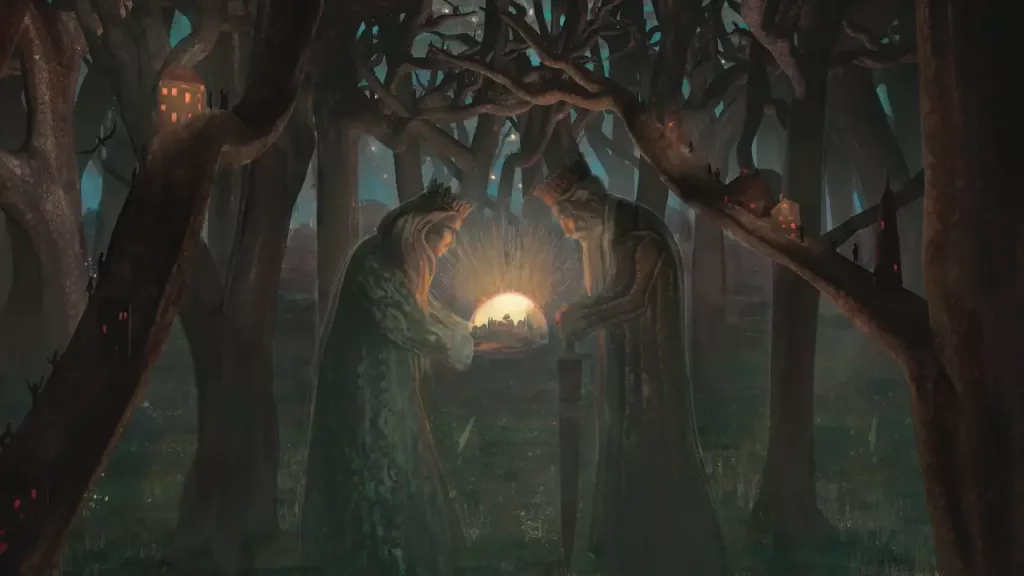
V. Z. – By the academic standards of his time, his technique could seem almost “primitive”. Yet his work was incredibly important… just not in the traditional way. He was searching for new forms, not virtuosity or a fixed genre. In many ways he was a pioneer — before modernism — and that’s why his paintings still look strikingly contemporary. His formal language was highly experimental; form mattered to him because he kept pushing it forward.
He often said it wasn’t interesting to copy what others had already made, so what he draws is unique because it is new. Yet, as Kristina said, it also carries emotion and meaning. It isn’t formality for its own sake; it reaches your heart and your mind. That was his singular quality, and many people in his lifetime couldn’t yet understand what was happening in his work.
From paintings to virtual reality
V. Z. – When we began working on Trails of Angels we needed high-quality scans. We partnered with the museum, which had many, but some belonged to the Čiurlionis family. His closest living relative then was his granddaughter Dalia Ona Zubovaitė-Palukaitienė, a sculptor. She has since passed away. When we asked her for the scans, she said very plainly: “OK, I’ll give them to you, but I don’t believe in your project.”
After the first version of TRAIL OF ANGELS was ready, we invited her to see it. She watched, stayed silent for a minute or two, and then said, “Thank you for your respect for the source.” For us, that felt like true recognition.
K. B. – It was crucial for us to honor the source. Two things mattered when we started the new project, Creations of the Worlds. First, quality: we weren’t just playing with Čiurlionis’s paintings, but we needed to take responsibility for working with Lithuania’s most prominent artist and doing it well. Second, respect: for the paintings and their messages.
We didn’t want to impose our egos; we tried to see where his art would lead and to join that current. We spent a long time looking at his paintings, entering his universe, trying to listen to what the images said. We saw how everything connects — to the world, to storytelling, to our experience. It took a lot of careful looking and some perfectionism to push it as far as we could.
V. Z. – In the end, however, we were happy to notice that the response to Creations of the Worlds was quite close to TRAIL OF ANGELS. To be honest, we were a bit worried initially: the first work was very successful, we already had a fan base, and many people had already told us, “We want another one!”. So, the expectations were there… but the pressure was too.
When we first started working in this field, we had come from nowhere, it was our first try. Now it’s different and the easy move would have been to copy-paste TRAIL OF ANGELS using different paintings.
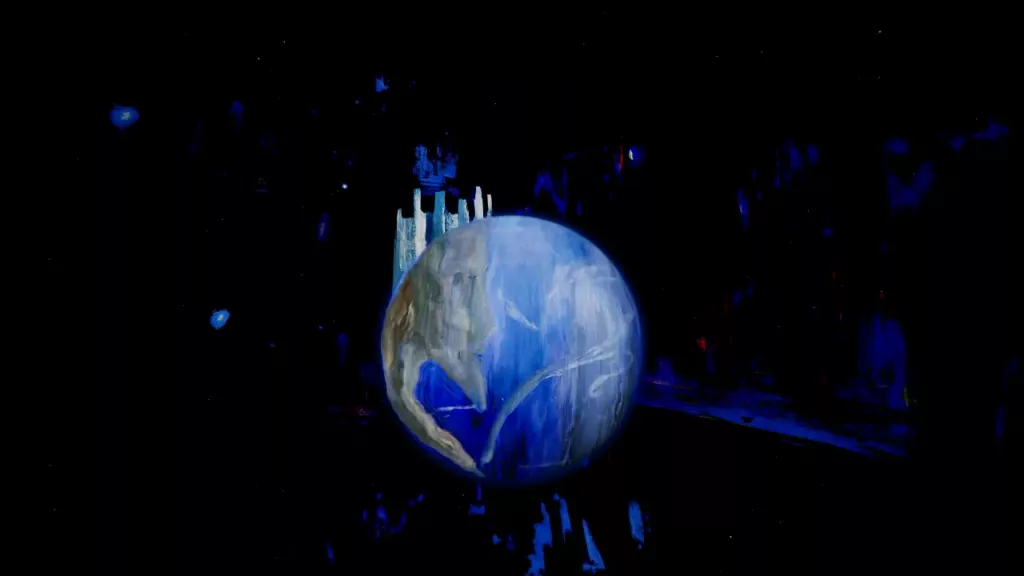
But that wouldn’t have interested us. We wanted something new: a different form, a different approach. VR is a new medium with so much still to discover; it would have been a shame to repeat what already worked. But that was scary at first. In the end, however, we saw two kinds of responses. Some viewers preferred TRAIL OF ANGELS for its spiritual tone. Others preferred CREATION OF THE WORLDS for its production scale, vastness, and sense of tranquility. Two groups — and for us, that’s the best outcome! We love both works, and letting the audience find what’s closer to them feels just right.
Building your favourite scenes
K. B. – When I think about my favourite scenes, I think about Fairy Tale of the Kings — the ending, that sense of tranquility it gives you. I also love when you’re flying above the city. We spent so many hours on that sequence that we thought we might not manage it; we even considered skipping it or cutting it short. But then the elements came together and it blossomed. There’s a pleasure in it that returns again and again. When that happens, you feel you’ve captured the scene.
Take the water painting, when the wave comes in: I’ve watched it countless times. When you create, you need to do that, it’s part of the job. And if the moment still affects you after so many repetitions… you know it’s working.
V. Z. – When we review a scene in VR, we ask: do we feel something? Does it truly touch us? Are we fully inside what’s happening? If not, we ask ourselves why. We have to feel a scene, first; only then can it work for others.
As for favorites, I have one that feels like two scenes in one: the rain of stars, and then three suns setting. I could stay there for half an hour. It’s real tranquility, and I especially love the sounds of that moment. I’d love to make an entire experience based on that feeling alone. We’re trying to keep things entertaining, of course, but I’m drawn to very slow, subtle, long changes—a place where you can simply be and meditate.
About the flying scene, there’s something else worth mentioning, because many people don’t notice at first: you can control the flight. If you try the experience again, you’ll find you can fly anywhere. It’s about feeling, not thinking. You need to relax, accept that you’re in a dream, and let your body’s sense of movement guide you. In some places you mostly float with limited freedom; in others, like with the birds, you can move up and down, fly with them, and enjoy the ride.
K. B. – You can fly under the aqueduct or above it, too. We chose not to add arrows telling you what to do, though. Too many prompts pull your mind away from being present; you start thinking, “What can I do? This? That?”. That wasn’t the goal.
V. Z. – That’s one of the reasons why I’m also not fond of voiceovers in VR. The moment a voice explains, you begin to listen and analyze instead of feel. The only kind of voiceover I like is poetry, which works as part of the sound design. Explanations are a clear no for me.
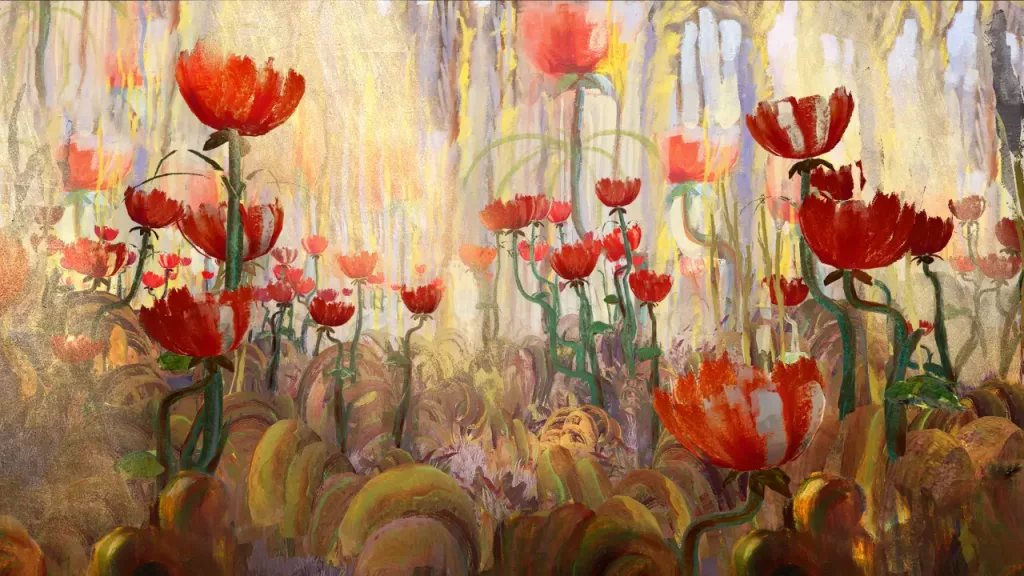
Music for the Story, Story for the Music
K. B. – One challenge for CREATION OF THE WORLDS was that in TRAIL OF ANGELS we had already used the best of Čiurlionis’s music and didn’t want to repeat it. His original scores are Romantic, full of shifts, very hard to edit, and they didn’t suit this new piece, even though we wanted to keep the spirit that his music conveys. Then Vitalijus suggested working with Phil Von and Rokas Zubovas.
V. Z. – I first saw their concert, a live show they performed together. Rokas Zubovas is a descendant of Čiurlionis, his grandson, specifically, and he takes care of the legacy. Phil Von comes from a different world: an electronic/experimental musician, dancer and performer. They were developing an interpretation of Čiurlionis, and after the show I realized we could collaborate on this new project.
It’s important to notice that in TRAIL OF ANGELS the music isn’t only Čiurlionis’. A modern Lithuanian composer, Mindaugas Urbaitis, took Čiurlionis’s principles and harmonies and worked with them, creating something contemporary that edges toward classical minimalism. It’s a big part of Trail, and we mixed it with Čiurlionis’s originals, and it sounded great.
I liked that approach in the first project. In the second, when we tried using only Čiurlionis’s originals, it was disappointing, not what we wanted. Once we brought in more experimental, contemporary music, the piece became something different. That’s when we committed to the contemporary direction.
K. B. – What’s beautiful is that they use elements of Čiurlionis’s actual music and weave them into experimental sound design, transforming them, letting motifs come and go. Sometimes the music led the image; sometimes the image led the music. It made everything flow more smoothly as a whole.
A distinctive approach to distribution: the Lithuanian case
V. Z. – Lithuania’s approach to immersive art has expanded after TRAIL OF ANGELS. Creatives often focus on how to make something, but I’m equally concerned with how to show it. In this regard, we occupy a unique position: we have three VR cinemas, in Vilnius, Kaunas, and Klaipėda, and a team that brings our works to small towns and village schools.
This distribution model is distinctive. Once we saw it working, other artists and entrepreneurs in Lithuania embraced it. Some created new pieces — one was in Venice last year, Play Life (by Zilvinas Naujokas, Vilius Petrauskas, Mantas Pronckus, Donatas Ulvydas, Algis Kriščiūnas, Darius Žičkus). They built a parallel network of cinemas. They have three, we have three: six permanent venues, two functioning networks in a country of three million. Show me another country doing that!
Now we want to take this model abroad. For us it isn’t only about heritage but about fundamental values: beauty, presence, the feeling of being elsewhere. People shouldn’t go to a cinema because they like VR; VR is a tool to carry emotion to the audience. In a time when many are tired and rushed, with little space to feel, our message is to slow down and look around: the world is amazing. Experiences like this are a kind of escape room from everyday life — a chance to step into an endless environment, an endless world.
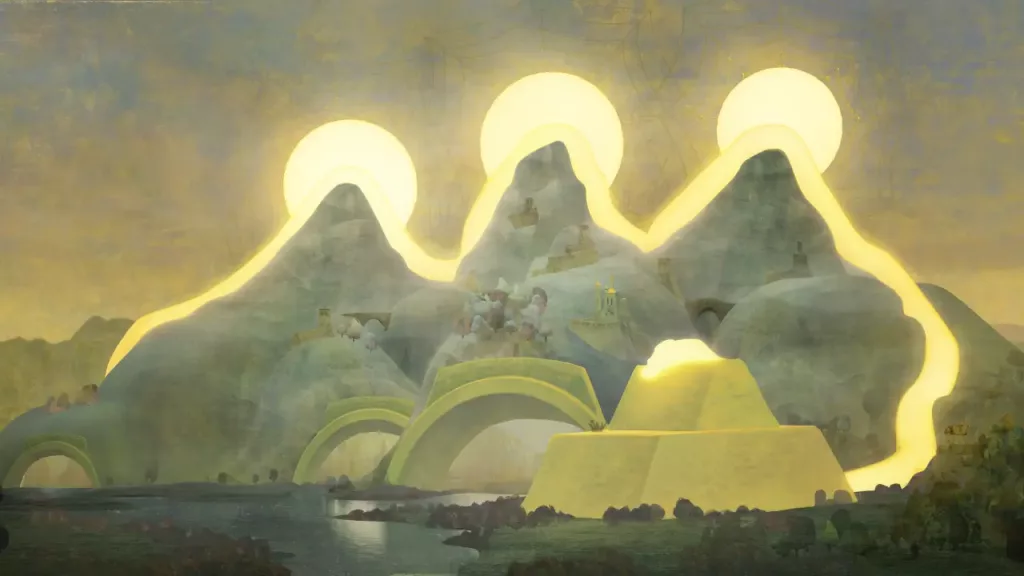
K. B. – I’m not sure it’s an escape. To me it’s more of a recharge. The world is beautiful — there’s a lot of hardship, but fundamentally it is beautiful. That’s why I speak about using VR and art as a recharge station.
We’ve also begun scientific research to see how our VR affects psychological well-being, including studies with cancer patients. It’s a field we’re just starting to tiptoe into. However, if you look beyond entertainment, as Vitalijus said, and think of it as recharging, you allow yourself to experience positive emotions. It’s an important area to explore, and art is a good way to learn more about it.
V. Z. – That’s what the piece is about. It wasn’t that Kristina and I sat down to decide what not to change or how not to put our egos in; we simply spent so much time with Čiurlionis that we became like-minded. What many people need now is to return to beauty: to sit, to take it in. That’s what he wanted to say, and we tried to carry that meaning into this new medium too.

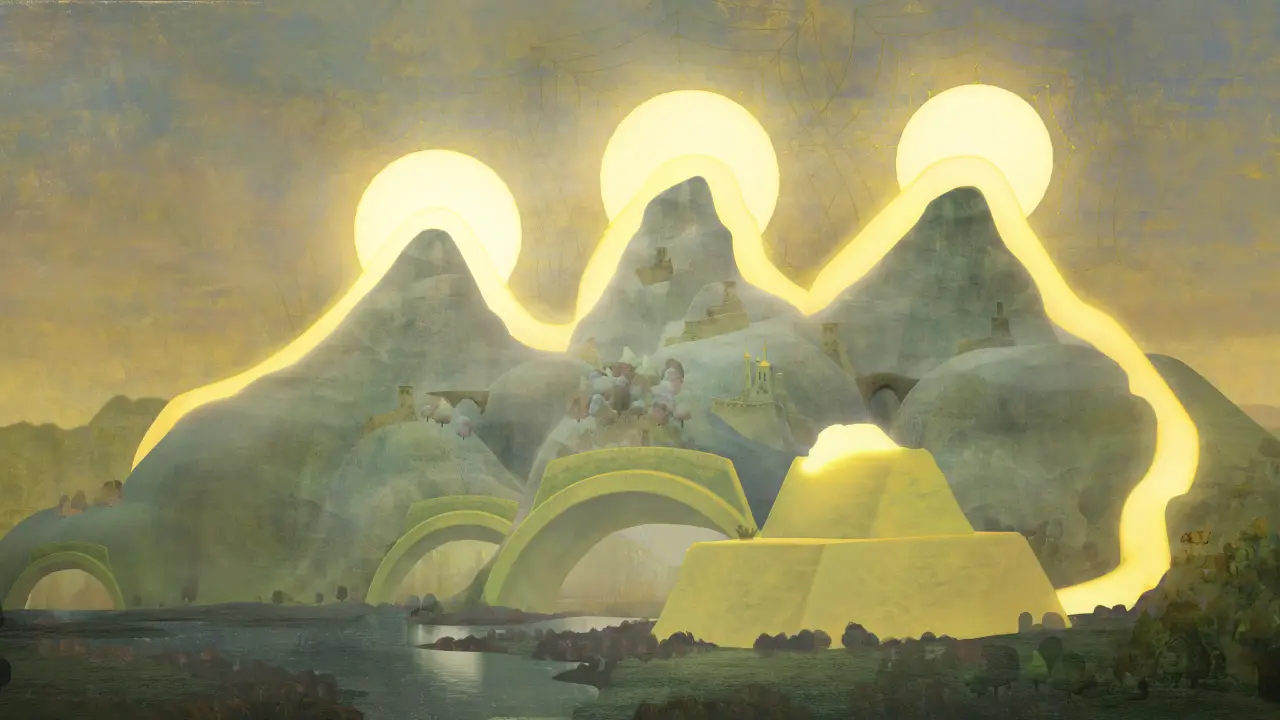

Leave a Reply
You must be logged in to post a comment.